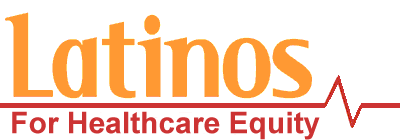« Exodus By Puerto Rican Medical Students Deepens Island’s Doctor Drain | Main | Six resign from presidential HIV/AIDS council because Trump ‘doesn’t care’ »
The other implication of the CBO report: Election-year pain
By admin | May 30, 2017
By Drew Altman, Kaiser Family Foundation
Probably the biggest effect before the 2018 mid-terms will be the rise in premiums across the non-group market which the CBO predicts after the repeal of the individual mandate. Older workers who buy their own coverage will also begin to pay more, as five-to-one age rating replaces the three-to-one age rating under Obamacare.
Then, before the presidential election in 2020, the new AHCA tax credit will kick in. There will be winners who get can get a better deal, mostly younger, higher-income people in low cost areas who may be happy with “skinnier” limited benefit plans that states may allow. But there will be losers too: mainly older and lower-income people who live in high cost, often rural areas.
Budget fights: As the Medicaid expansion begins to unravel, states that expanded Medicaid will have fights over whether to fill the federal funding gap with state funds. Medicaid will have to compete with school spending, higher education, corrections, environmental protection and other state priorities.
Sick people could face “extremely high” premiums in states that choose to waive Obamacare insurance protections, according to CBO, creating more media stories and political problems.
Each negatively affected voter has a family and friends who know about their experiences, creating a multiplier effect. Media coverage focusing on their stories will add to the narrative. The negative anecdotes are always louder than the positive ones.
What to watch: The next election is the mid-term in 2018, and mid-terms are all about turnout of slivers of the electorate; the most motivated voters. If the CBO’s analysis of winners and losers under the AHCA is even close to right, it will morph quickly from the storyline Republicans want — they kept their promise to repeal “Obamacare” — to a reality with winners and losers.
It’s hard to see how it will stoke turnout on the right once the reality painted by CBO sets in, and it could diminish it. And it may add energy to voters on the left and in swing districts that could decide control of the House.
Here’s a look at how it could play out.
2018 ELECTIONS
Summer 2017:
- Individual mandate eliminated. Insurers may raise premiums.
Nov. 1, 2017:
- Open enrollment under the AHCA begins. Consumers in the individual market may find much higher premiums.
Nov. 1, 2018:
- People with preexisting conditions, gap in insurance may start to face higher premiums in states waiving community rating.
- Healthy people may see lower premiums.
2020 ELECTIONS
Spring/Summer 2019:
- States may begin to close their Medicaid expansions to new enrollees.
- Or they may raise taxes/make cuts elsewhere in budgets.
- With new federal Medicaid spending limits, states may tighten eligibility and reduce benefits and provider payments.
Nov. 1, 2019:
- ACA tax credits are replaced with less generous ones. Cost-sharing subsidies are repealed.
- Winners: The young and higher income in low-cost areas..
- Losers: Older and poorer in high-cost areas.
Jan. 1, 2020:
- More states close Medicaid expansion to new enrollees.
- States can waive essential benefits. Many insurers sell “skinny plans,” and many healthy people buy them.
BEYOND 2020
- Number of uninsured Americans continues to rise. CBO says reaching 51 million in 2026.
Topics: Uncategorized | No Comments »
Comments are closed.

